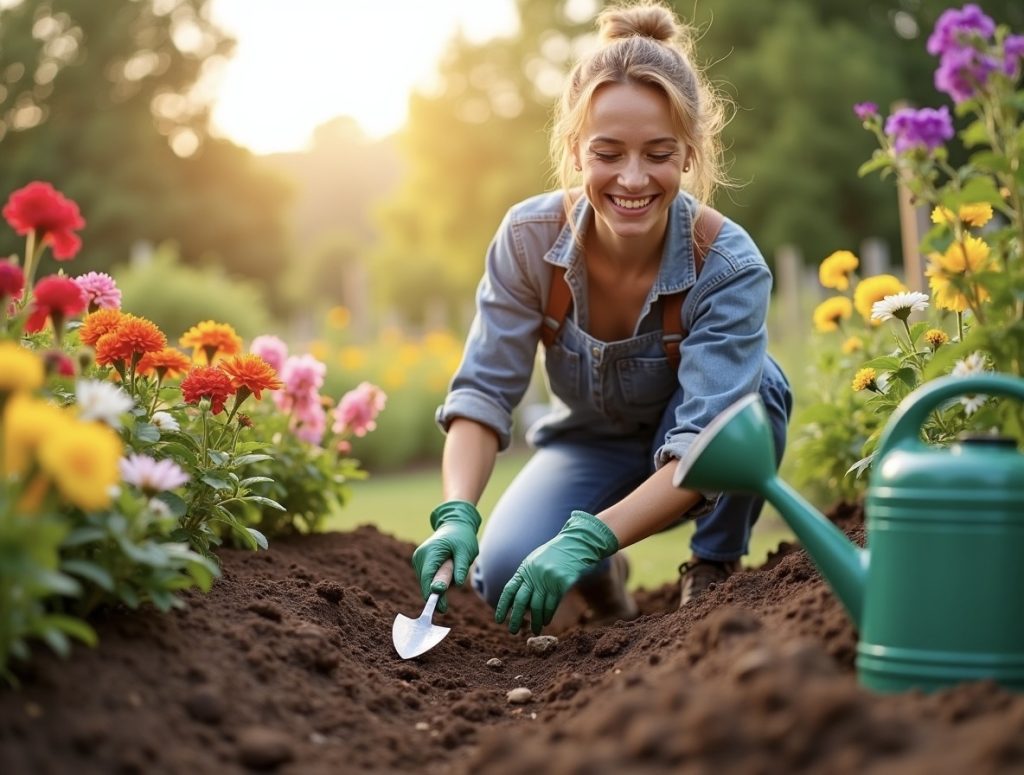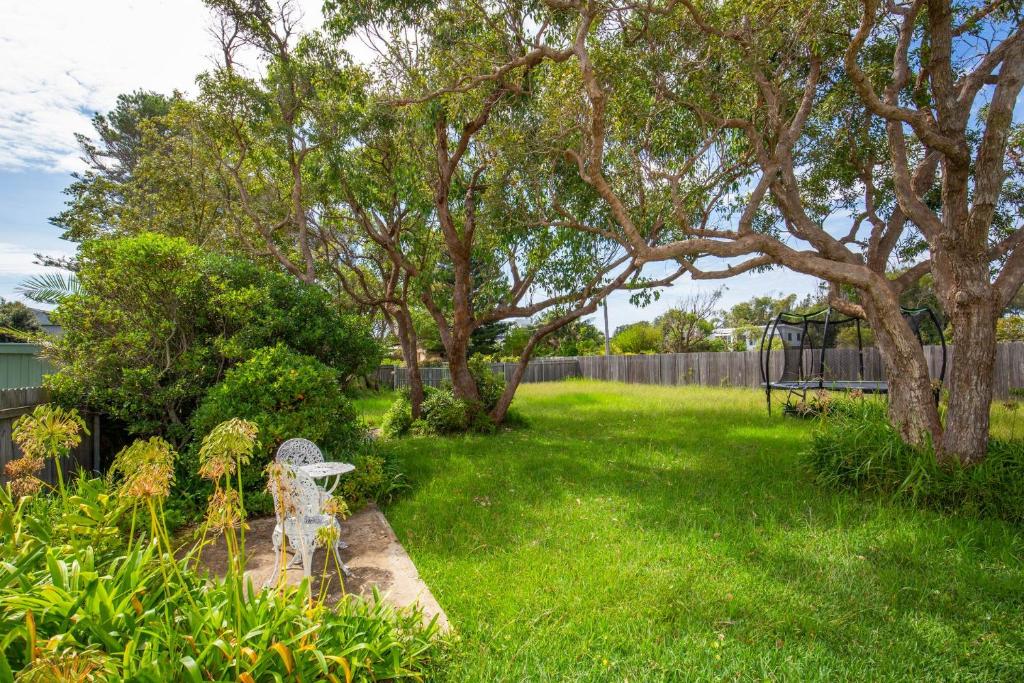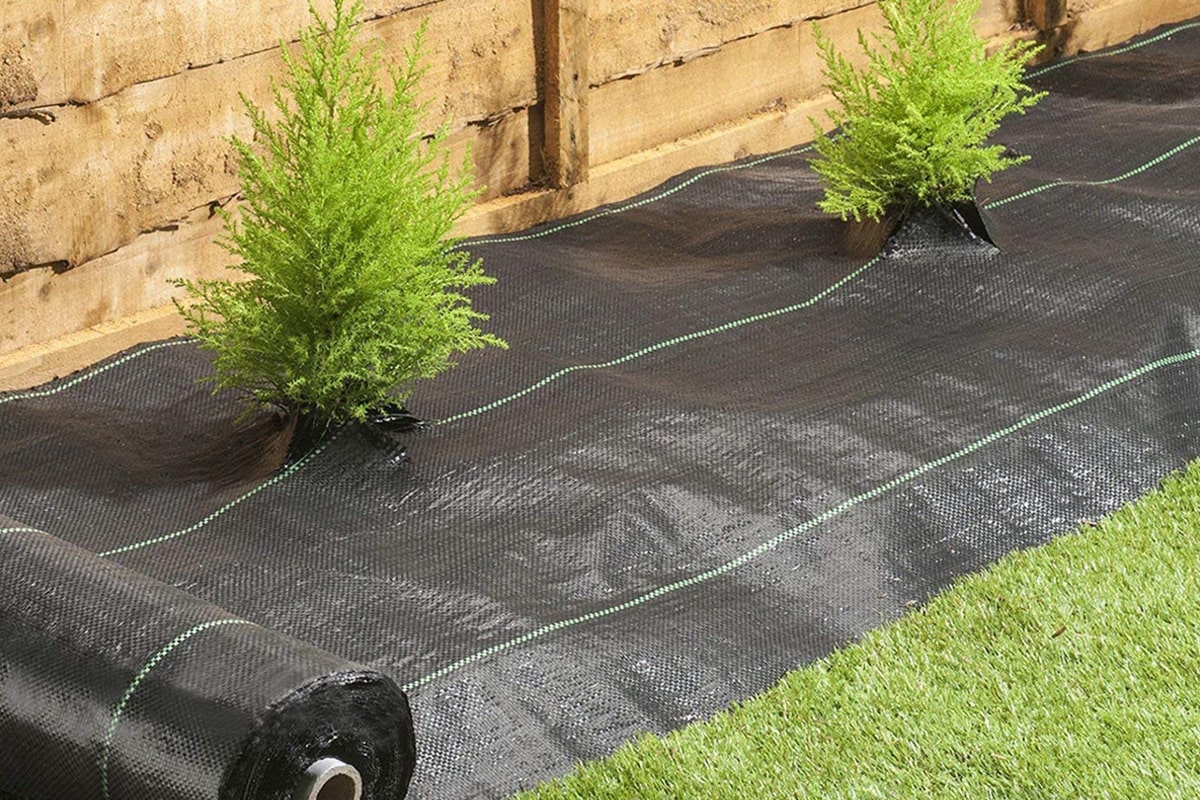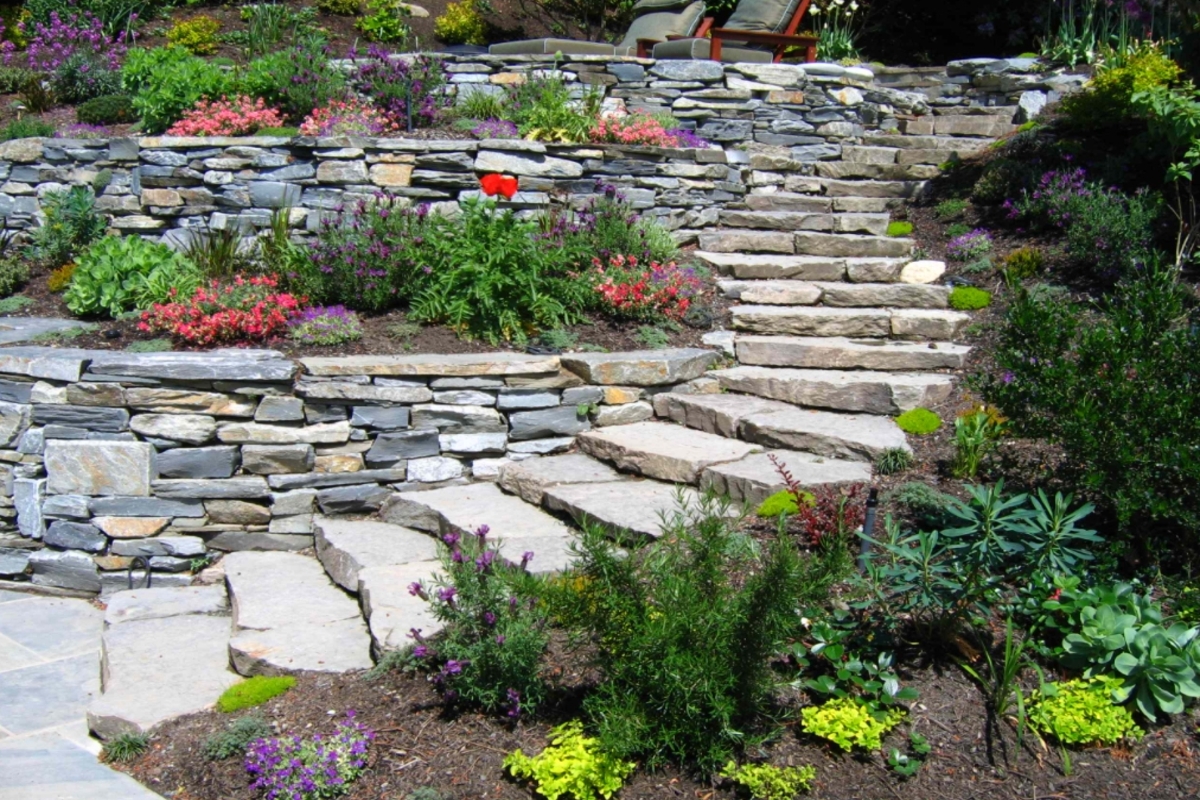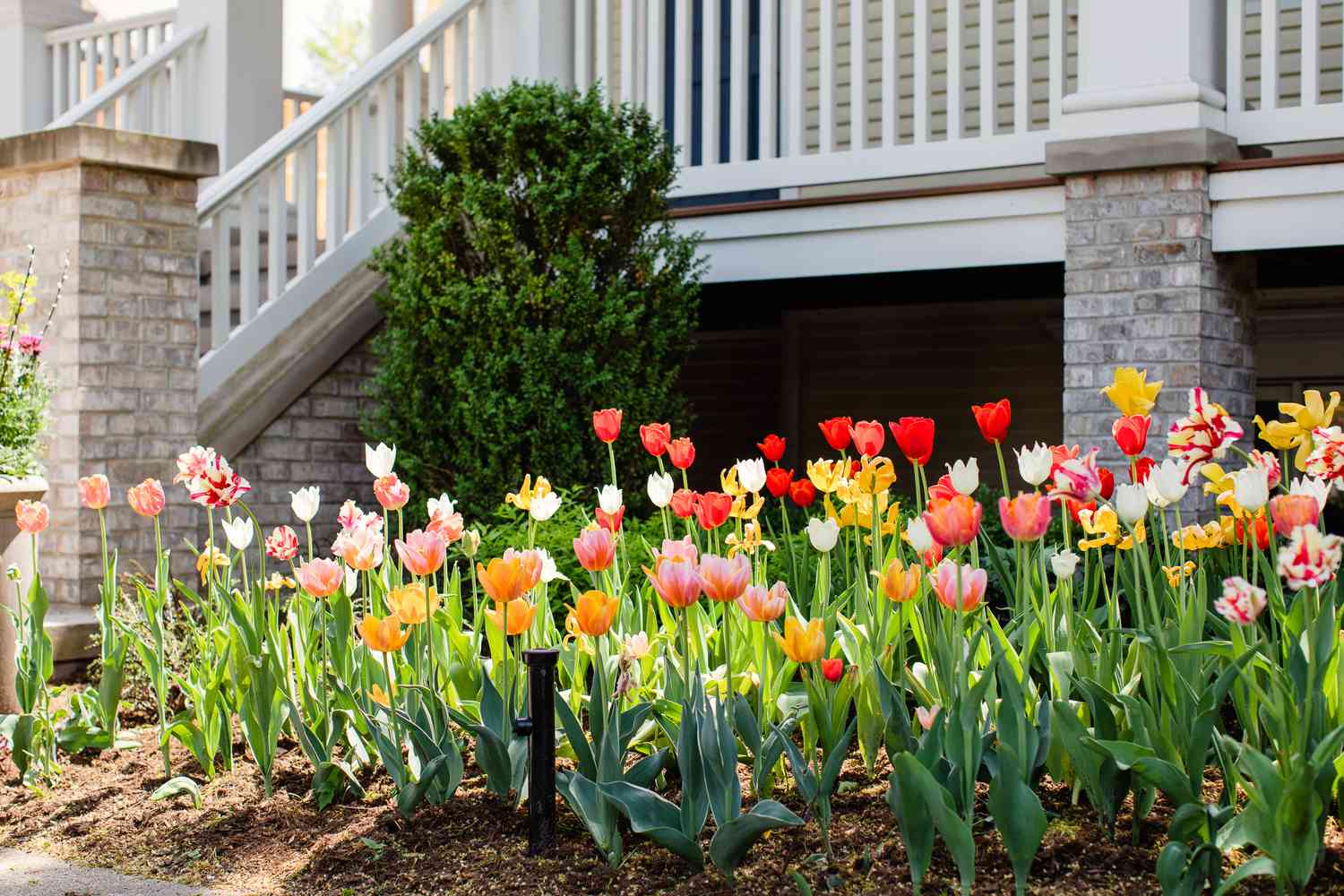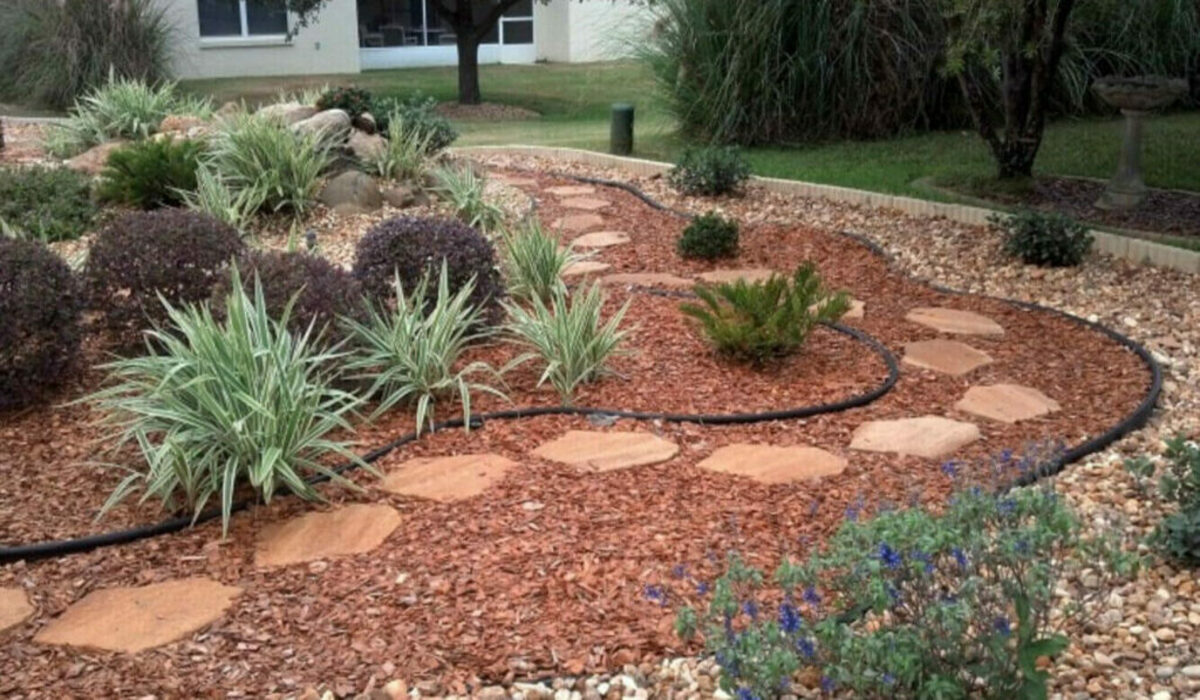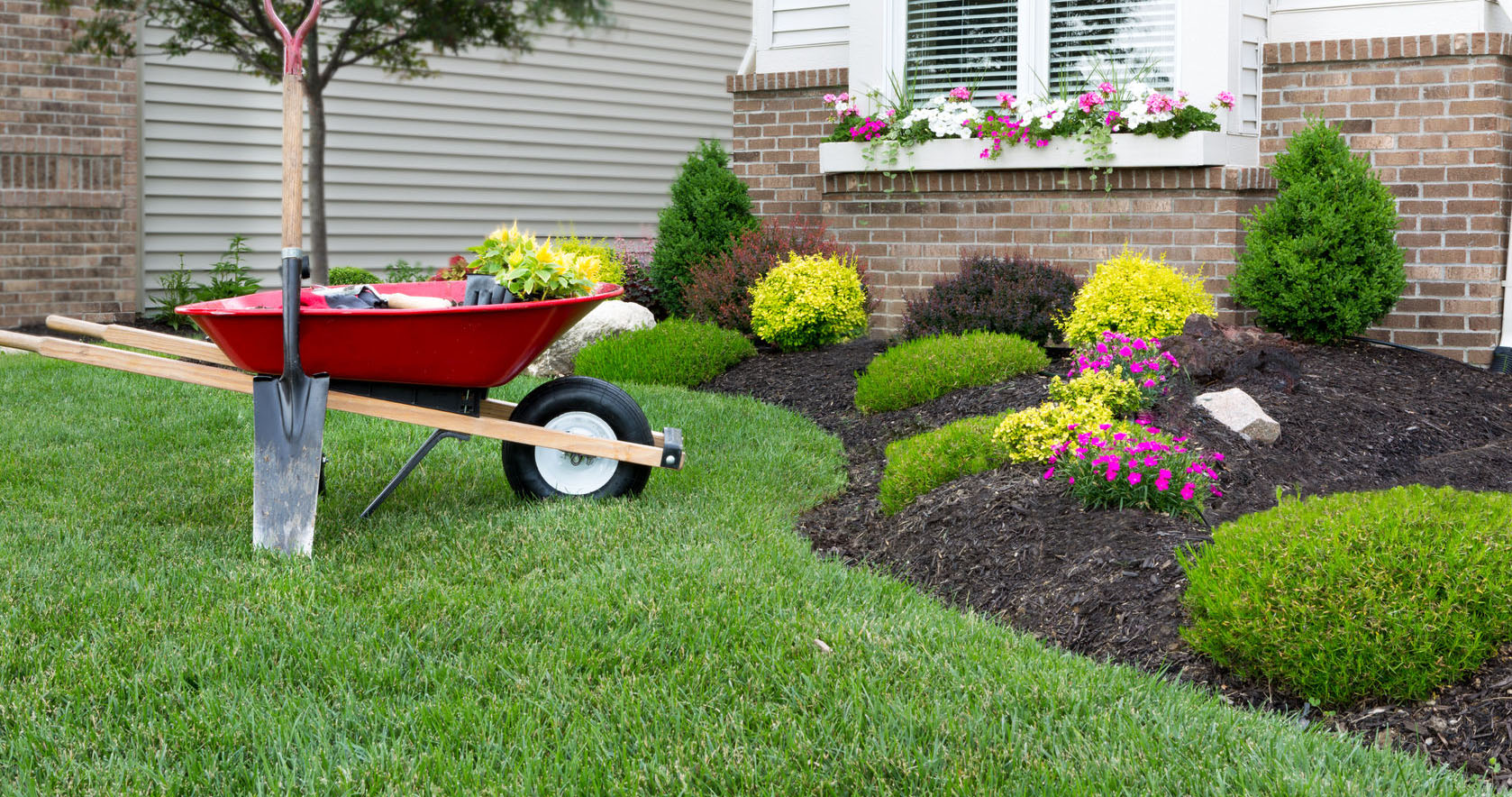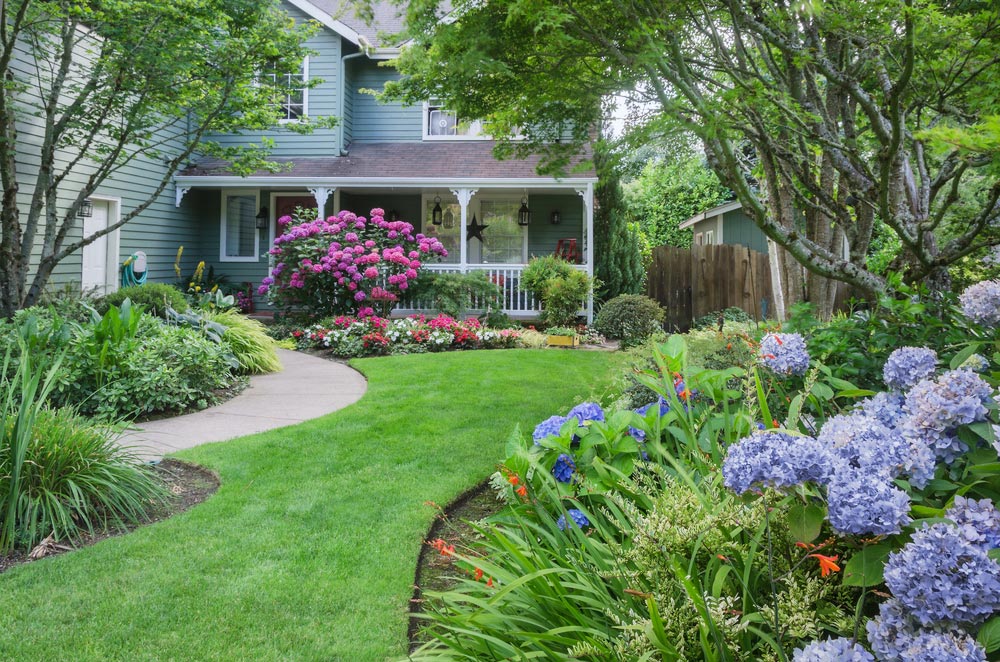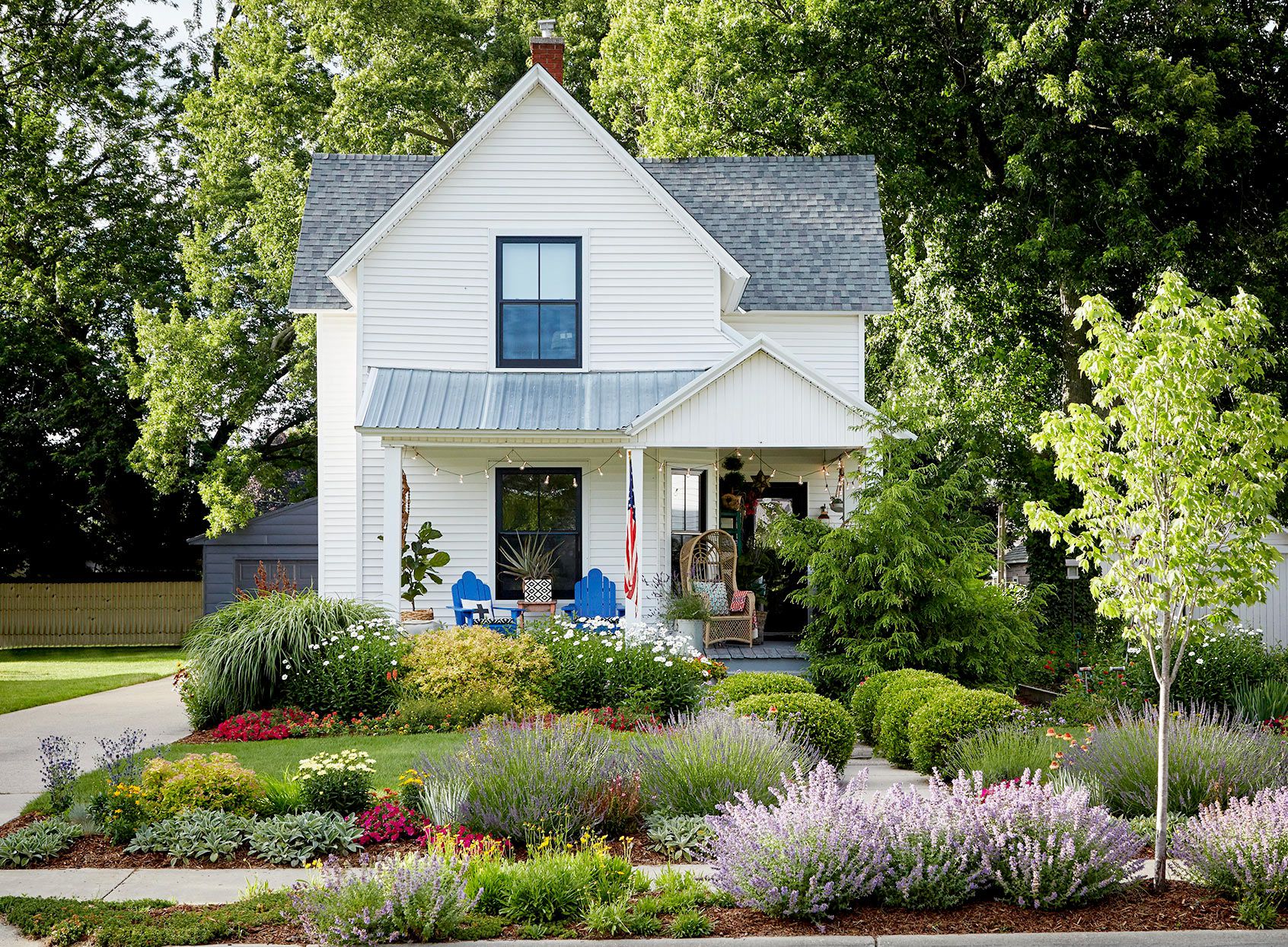Home>Gardening News and Trends>Latest News>What Does Landscaping Include


Latest News
What Does Landscaping Include
Modified: January 22, 2024
Discover the latest news and updates on landscaping, including tips, tricks, and trends. Stay informed and transform your outdoor space with expert insights.
(Many of the links in this article redirect to a specific reviewed product. Your purchase of these products through affiliate links helps to generate commission for Chicagolandgardening.com, at no extra cost. Learn more)
Table of Contents
Introduction
Welcome to the world of landscaping, where nature meets artistry. Landscaping is the art and science of transforming outdoor spaces into beautiful, functional, and sustainable areas. Whether it’s a backyard, a front yard, or a commercial property, landscaping plays a vital role in enhancing the overall aesthetic appeal of the surroundings.
From creating vibrant gardens to constructing stunning outdoor structures, landscaping encompasses a wide range of activities that require a keen eye for design and an understanding of nature. A well-designed landscape not only adds value to a property but also provides a peaceful retreat for homeowners and visitors alike.
Landscaping goes beyond simply adding plants and flowers to an area; it involves a careful balance between natural and man-made elements to achieve a harmonious blend. By combining the right plants, hardscapes, and other features, landscaping can create a visually stunning and functional outdoor space.
Are you tired of looking at a dull and uninspiring landscape? Are you ready to transform your outdoor area into a captivating haven? Then join us as we explore the world of landscaping. In this comprehensive guide, we will take a closer look at what landscaping entails and why it is so essential for creating an inviting and enchanting outdoor environment.
Definition of Landscaping
Landscaping, in its simplest form, refers to the process of modifying and improving the visible features of a piece of land. It involves the deliberate arrangement and alteration of elements such as plants, trees, flowers, shrubs, hardscapes, structures, and other natural or man-made features to create an aesthetically pleasing and functional outdoor space. Landscaping can be done on small residential properties, large public spaces, or even commercial areas.
At its core, landscaping is about creating a harmonious balance between the natural and built elements of the land. It is an art that requires creativity, an understanding of environmental factors, and a knowledge of horticulture and design principles.
Landscaping is not limited to just enhancing the visual appeal of an area; it also takes into account the functional aspects. It aims to make the outdoor space usable and practical, whether it’s for recreational purposes, gardening, or creating a peaceful sanctuary for relaxation.
There are various types of landscaping, ranging from softscaping to hardscaping. Softscaping refers to the use of plants, trees, flowers, and other organic materials to create a lush and vibrant landscape. Hardscaping, on the other hand, involves the use of non-living elements such as rocks, pathways, patios, fences, and outdoor structures.
Landscaping is a dynamic process that considers the natural features of the land, including the soil quality, sunlight exposure, drainage patterns, and climate. It takes into account the specific needs and desires of the property owner to create a customized outdoor space that reflects their style and preferences.
Overall, landscaping is a transformative process that turns a blank canvas into a work of art. It allows individuals to connect with nature, create beautiful outdoor living spaces, and improve the overall quality of their surroundings.
Importance of Landscaping
Landscaping plays a crucial role in enhancing the beauty, functionality, and overall quality of outdoor spaces. Here are some key reasons why landscaping is important:
1. Enhances Curb Appeal: Well-designed landscaping instantly improves the visual appeal and first impression of a property. It adds curb appeal, making the property more attractive to potential buyers or visitors. A beautifully landscaped yard can significantly increase property value. 2. Creates a Relaxing Environment: Landscaping provides a serene and peaceful environment to relax and unwind. The sound of rustling leaves, the aroma of flowering plants, and the sight of a well-maintained garden can be incredibly soothing and therapeutic. 3. Improves Quality of Life: A thoughtfully designed landscape can enhance the quality of life for homeowners. It offers a space for outdoor activities, such as gardening, entertaining guests, or spending quality time with family. Having access to nature has been proven to reduce stress levels and improve overall well-being. 4. Environmental Benefits: Landscaping has numerous environmental benefits. Plants and trees help to purify the air by filtering pollutants and releasing oxygen. Lawns absorb rainfall, reducing the risk of flooding and erosion. A well-maintained landscape also provides a habitat for birds, bees, and other beneficial insects. 5. Energy Efficiency: Strategic placement of trees and shrubs can provide shade in the summer, reducing the need for air conditioning, and act as windbreaks in the winter, reducing heating costs. This energy efficiency helps to lower utility bills and minimize the ecological footprint of the property. 6. Privacy and Security: Landscaping can create a sense of privacy and security by strategically placing trees, hedges, and fences. These elements act as natural barriers, shielding the property from prying eyes and reducing noise pollution. 7. Managing Water Resources: Landscaping involves the installation of proper drainage and irrigation systems to prevent waterlogging and promote efficient use of water. This helps to conserve water resources and maintain a healthy and sustainable ecosystem. 8. Community and Social Benefits: Well-designed public spaces, parks, and gardens promote community engagement and social interaction. They provide a gathering place for neighbors, encourage physical activity, and foster a sense of belonging and pride within the community. In summary, landscaping goes beyond aesthetics; it plays a vital role in creating a welcoming and functional outdoor space. From improving property value to promoting environmental sustainability, landscaping offers numerous benefits for individuals, communities, and the planet as a whole.
Elements of a Landscape
A beautifully landscaped outdoor space is composed of various elements that work together to create a cohesive and harmonious design. Each element contributes to the overall aesthetic appeal and functionality of the landscape. Here are the key elements of a landscape:
1. Plants and Trees: Plants and trees are the backbone of any landscape design. They provide color, texture, and height variations, creating visual interest and adding life to the surroundings. Different types of plants and trees can be selected based on preferences, climate, and specific design goals. 2. Flowers and Shrubs: Flowers and shrubs are commonly used to add bursts of color and fragrance to a landscape. They can be planted in flower beds, borders, or containers to create focal points and attract pollinators. Flowering shrubs also provide privacy and serve as natural dividers within a space. 3. Hardscapes: Hardscapes include non-living elements such as pathways, driveways, patios, walls, and outdoor structures like pergolas, gazebos, and decks. Hardscapes provide structure and define different areas within the landscape. They can be made of various materials such as concrete, stone, wood, or brick. 4. Water Features: Water features add a calming and soothing element to a landscape. This can include fountains, ponds, streams, or waterfalls. Water features not only provide visual interest but also create a sense of tranquility and promote relaxation. 5. Lighting: Outdoor lighting is essential for highlighting key features of the landscape and creating a warm and inviting ambiance. It can be used to illuminate pathways, accentuate plants or art installations, and enhance the overall safety and security of the property. 6. Furniture and Accessories: Outdoor furniture, such as patio sets, benches, and loungers, enhances the functionality and comfort of the landscape. Accessories like decorative pots, sculptures, and bird feeders add personality and character to the space. 7. Edging and Borders: Edging materials, such as bricks, stones, or metal, help define the boundaries of different garden beds and pathways. They add a polished and finished look to the landscape while preventing plants from encroaching on unwanted areas. 8. Lawns and Groundcover: Lawns and groundcovers provide a soft and inviting surface for recreational activities. They also help to unify the elements of the landscape and provide a backdrop for other plants and structures. 9. Textures and Materials: Incorporating various textures and materials adds visual interest and depth to the landscape. This can include using different types of stones, mulch, gravel, or wooden decking to create contrast and variety. 10. Seasonal Interest: Consider including plants and features that provide year-round interest. This can entail selecting plants with foliage that changes color throughout the seasons, incorporating evergreen trees or shrubs for winter interest, or adding seasonal decorations and ornaments for festive occasions. By carefully considering and integrating these elements, a well-designed landscape can be created that reflects personal style, enhances the surrounding environment, and provides an enjoyable outdoor space for relaxation and recreation.
Planting and Gardening
Planting and gardening are integral components of landscaping that involve the selection, placement, and care of plants to create a vibrant and thriving outdoor space. Whether it’s a lush garden, a colorful flowerbed, or a thriving vegetable patch, planting and gardening add beauty, fragrance, and a sense of life to a landscape.
Plant Selection: The first step in planting and gardening is choosing the right plants for the specific climate, soil conditions, and desired aesthetic. Factors such as sunlight, water requirements, and maintenance should be considered. It’s important to select a variety of plants that offer diverse textures, colors, and heights to create visual interest and a balanced composition.
Soil Preparation: Healthy plants start with healthy soil. Before planting, it’s important to prepare the soil by removing weeds, loosening compacted areas, and adding organic matter such as compost or peat moss. This improves soil fertility, drainage, and nutrient availability, providing optimal conditions for plant growth.
Planting Techniques: Proper planting techniques ensure the successful establishment of plants. This includes digging the appropriate-sized hole, gently loosening the root ball, placing the plant at the correct depth, backfilling with soil, and firming it gently around the root system. Adequate watering after planting is crucial to help plants establish their roots.
Watering and Irrigation: Adequate watering is essential for plant health. Understanding the water requirements of different plants and providing the right amount of water at the right time is crucial. In addition to manual watering, irrigation systems, such as drip irrigation or sprinklers, can be installed to deliver water directly to the root zone efficiently.
Pruning and Maintenance: Regular pruning helps maintain the shape, size, and health of plants. It involves removing dead or diseased branches, shaping shrubs, and controlling growth. Regular maintenance tasks, such as weeding, fertilizing, mulching, and pest control, contribute to the overall health and appearance of the garden.
Companion Planting: Companion planting involves grouping plants together based on their compatibility and mutual benefits. Certain plants repel pests, while others attract beneficial insects or improve soil fertility. Strategic companion planting can promote plant health, enhance pollination, and deter pest infestations naturally.
Sustainable Gardening: Sustainable gardening practices minimize environmental impact and conserve resources. This includes using organic fertilizers, practicing water-efficient irrigation, recycling and composting garden waste, and choosing native or drought-tolerant plants that require less water and maintenance.
Seasonal Maintenance: Gardens require seasonal maintenance to adapt to changing weather conditions. This includes planting seasonal flowers and vegetables, pruning back dormant plants, protecting plants from frost or extreme heat, and preparing the garden for winter or spring.
Planting and gardening allow individuals to connect with nature, create beautiful landscapes, and enjoy the rewards of bountiful blooms, fresh herbs, or a homegrown harvest. With proper planning, care, and maintenance, planting and gardening can transform an ordinary landscape into a vibrant and thriving oasis.
Hardscaping and Outdoor Structures
Hardscaping and outdoor structures are essential elements of landscaping that add structure, functionality, and visual appeal to outdoor spaces. From pathways and patios to gazebos and pergolas, these man-made features play a crucial role in transforming ordinary landscapes into stunning and functional outdoor environments.
Pathways and Driveways: Pathways and driveways provide practical access throughout the landscape. They can be made of various materials such as concrete, stone, gravel, or pavers, offering aesthetic appeal while ensuring safe and convenient movement around the property.
Patios and Decks: Patios and decks are outdoor living spaces that extend the functional area of a property. They provide a place for relaxation, dining, and recreation. Materials such as wood, concrete, or composite decking can be used to create these inviting spaces that can be adorned with outdoor furniture, rugs, and lighting.
Outdoor Kitchens and Bars: Outdoor kitchens and bars have gained popularity as homeowners seek to enhance their outdoor entertaining experience. These features can include built-in grills, countertops, sinks, refrigerators, and seating areas, providing a perfect setting for cooking, dining, and socializing in the open air.
Gazebos and Pergolas: Gazebos and pergolas are architectural structures that add elegance and shade to outdoor spaces. Gazebos are often freestanding with a roof, while pergolas have an open-roof design. They can be used as focal points in the landscape or as shaded areas for seating, dining, or as a shelter for outdoor activities.
Outdoor Fireplaces and Fire Pits: Adding an outdoor fireplace or fire pit creates a cozy and inviting atmosphere for gatherings and relaxation. These structures provide warmth, serve as focal points, and extend the usability of outdoor spaces into cooler evenings, allowing for year-round enjoyment.
Retaining Walls and Fences: Retaining walls are used to level sloping terrain, create visual interest, and prevent erosion. They can be made of various materials, such as stone or concrete blocks. Fences, on the other hand, provide privacy, security, and definition to the property boundaries while enhancing the aesthetic appeal of the landscape.
Archways and Arbors: Archways and arbors are decorative structures that add elegance and character to a landscape. They can be used to frame entrances, pathways, or garden features. Climbing plants such as roses or vines can be trained to grow over them, further enhancing their beauty.
Water Features and Ponds: Water features, such as fountains, ponds, or waterfalls, create a tranquil and soothing ambiance within the landscape. They act as focal points, attracting wildlife and adding a sense of serenity to the outdoor space.
Outdoor Lighting: Outdoor lighting is an essential component of hardscaping, enhancing the beauty and functionality of the landscape. It highlights key features, creates ambiance, and improves safety and security by illuminating pathways and entrances.
Hardscaping and outdoor structures provide the backbone of a well-designed landscape. When combined with other natural elements, they create a visually stunning and functional outdoor living space that can be enjoyed throughout the year.
Drainage and Irrigation Systems
Drainage and irrigation systems are vital components of landscaping that ensure proper water management. They prevent water-related damage, promote healthy plant growth, and contribute to the overall sustainability of the landscape. Let’s explore the importance of drainage and irrigation systems in landscaping.
Drainage Systems: Drainage systems are designed to redirect excess water away from the landscape, preventing waterlogging, soil erosion, and the formation of stagnant pools. Proper drainage ensures that water is effectively channeled away from the property, protecting the foundation of structures and keeping the landscape in optimal condition.
Various drainage solutions can be employed, including French drains, catch basins, surface drains, and swales. These systems help to capture, carry, and disperse water, allowing it to flow away from the landscape and into designated drainage areas or stormwater management systems.
Irrigation Systems: Irrigation systems are essential for delivering water to plants in a controlled and efficient manner. They ensure that plantings receive the appropriate amount of water, contributing to their health and vitality.
Irrigation systems can be manual or automated and can be customized based on the landscape’s needs. Some common types of irrigation systems include sprinklers, drip irrigation, and soaker hoses. These systems can be programmed to provide water at specific times and in specific quantities, conserving water while still keeping the landscape adequately hydrated.
Smart irrigation technology is also gaining popularity, allowing for precise watering based on weather conditions, soil moisture levels, and plant requirements. This not only conserves water but also promotes more sustainable and efficient irrigation practices.
Benefits of Drainage and Irrigation Systems:
Prevent Water-Related Damage: Proper drainage systems prevent water from pooling around plants, structures, or paved areas, reducing the risk of erosion, damage to roots, and structural issues caused by water intrusion.
Promote Plant Health: Effective irrigation helps keep plants well-hydrated without overwatering or underwatering. This promotes healthy root development, reduces stress on the plants, and increases their overall vitality.
Increase Water Efficiency: Well-designed irrigation systems deliver the right amount of water to plants, minimizing water waste and maximizing water use efficiency. This reduces water consumption, promotes conservation, and saves money on utility bills.
Create Optimal Growing Conditions: By managing water effectively, drainage and irrigation systems create optimal growing conditions for plants. They prevent oversaturation and the development of waterlogged soils, which can lead to root rot and other plant diseases.
Protect Landscaping Investments: Proper water management through drainage and irrigation systems helps protect the investment homeowners have made in their landscapes. By preventing water damage and promoting plant health, these systems preserve the beauty and value of the landscape.
Drainage and irrigation systems are crucial for maintaining a healthy and visually appealing landscape. By effectively managing water, these systems contribute to the long-term sustainability of the landscape and ensure its continued beauty and vitality.
Lawn Care and Maintenance
Lawn care and maintenance are integral parts of landscaping that are focused on creating and maintaining healthy, vibrant, and lush lawns. A well-kept lawn not only enhances the overall beauty of the landscape but also provides a functional space for various outdoor activities. Let’s explore the key aspects of lawn care and maintenance.
Mowing: Regular mowing is essential for maintaining a neat and well-manicured lawn. The frequency of mowing depends on the grass type and the desired height, but generally, it is recommended to never remove more than one-third of the grass blade in a single mowing. This ensures healthy growth and prevents stress to the grass.
Watering: Proper watering is crucial for maintaining a healthy lawn. It’s important to water deeply and infrequently, allowing the water to reach the root zone of the grass. Watering in the early morning or evening helps minimize water evaporation and allows the lawn to dry before nighttime, reducing the risk of disease development.
Fertilization: Regular fertilization provides essential nutrients that promote healthy grass growth. Choosing the right type of fertilizer and applying it at the appropriate times of the year helps maintain a robust and vibrant lawn. It’s important to follow the recommended application rates to avoid over-fertilization that can damage the grass.
Aeration: Lawn aeration involves perforating the soil to improve air circulation, water penetration, and nutrient uptake. It helps to reduce soil compaction and thatch buildup, which can impede root growth and lead to a weak and unhealthy lawn. Aeration should be done annually or as needed, depending on the condition of the lawn.
Weed Control: Regular weed control is essential for maintaining a weed-free lawn. Weeds compete with grass for nutrients and space, leading to a weakened lawn. Pre-emergent herbicides can be applied before weed seeds germinate, while post-emergent herbicides can be used to target existing weeds. Hand-pulling or spot treatment is also effective for removing isolated weeds.
Insect and Pest Management: Monitoring and managing insects and pests is important for preventing damage to the lawn. Routine inspection helps identify signs of infestations, such as brown patches, chewed leaves, or insect activity. Appropriate pest control measures, including insecticides or natural remedies, can be used to mitigate the issue and protect the lawn.
Dethatching: Thatch is a layer of dead and decaying organic matter that accumulates on the surface of the soil, obstructing water, air, and nutrient movement. Dethatching or removing this layer helps maintain a healthy lawn by allowing water and nutrients to reach the root zone, promoting proper grass growth.
Overseeding: Overseeding involves spreading grass seed over an existing lawn to fill in thin or bare areas. This helps improve the density and overall appearance of the lawn. It is typically done in the fall or spring when the temperature and moisture conditions are favorable for seed germination.
Seasonal Maintenance: Seasonal maintenance tasks, such as raking leaves, removing debris, and winterizing the lawn, are essential for keeping the lawn healthy year-round. Proper preparation and care during each season ensure that the lawn remains in optimal condition and prepares it for the changing weather conditions.
Regular lawn care and maintenance practices are necessary for achieving and maintaining a lush and healthy lawn. By following these guidelines, homeowners can enjoy a beautiful and inviting outdoor space that enhances the overall beauty of their landscape.
Landscaping Styles and Themes
Landscaping styles and themes provide a framework for creating cohesive and visually appealing outdoor spaces. They reflect personal preferences, architectural influences, and the desired atmosphere of the landscape. Whether it’s a formal and structured design or a lush and naturalistic approach, choosing a landscaping style sets the tone for the entire outdoor area. Here are some popular landscaping styles and themes:
1. Formal Garden: Formal gardens are characterized by symmetrical designs, geometric shapes, and structured hedges or topiaries. They often feature well-manicured lawns, precisely pruned plants, and classical elements such as fountains, statues, and pathways lined with perfectly trimmed borders. Formal gardens create an elegant and timeless ambiance.
2. Cottage Garden: Cottage gardens are charming and whimsical, conveying a relaxed and romantic atmosphere. They feature a mix of colors, textures, and heights, with an emphasis on abundant flowering plants, shrubs, and climbers. Cottage gardens often include quaint features like meandering pathways, picket fences, and rustic benches, evoking a quaint and cozy feel.
3. Mediterranean Style: Inspired by landscapes of southern Europe, Mediterranean-style gardens incorporate elements like terracotta pots, gravel or stone pathways, and drought-tolerant plants. These gardens are characterized by aromatic herbs, colorful flowers, and olive or citrus trees. Water features, such as fountains or small ponds, are also common in Mediterranean-style landscapes.
4. Japanese Garden: Japanese gardens are known for their Zen-like tranquility, simplicity, and attention to detail. They often feature elements such as carefully placed rocks, bridges, water features, bonsai or dwarf trees, and moss or gravel pathways. These gardens aim to create a sense of balance, harmony, and contemplation.
5. Tropical Oasis: Tropical-style landscapes evoke a feeling of being on a vacation in a lush paradise. They feature vibrant and exotic plants with large leaves, bold colors, and dramatic textures. Palm trees, ornamental grasses, tropical flowers, and flowing water features contribute to the lush and tropical atmosphere.
6. Contemporary Minimalism: Contemporary landscaping emphasizes clean lines, simplicity, and a focus on functionality. It involves the use of sleek materials like concrete, steel, or glass, with an emphasis on open spaces and minimalistic plantings. Neutral color palettes, geometric shapes, and architectural elements create a modern and streamlined aesthetic.
7. Woodland Garden: Woodland gardens embrace a more naturalistic and organic style. They mimic the beauty of a forest by incorporating shade-loving plants, native species, and natural materials like rocks, logs, and mulch. The focus is on creating a habitat for wildlife, showcasing the beauty of native plants, and showcasing the changing seasons.
8. Desert Xeriscaping: Xeriscaping is a water-efficient landscaping style suitable for arid regions. It features plants adapted to drought conditions, such as succulents, cacti, and desert grasses. Gravel, rocks, and other hardscape elements help retain moisture and reduce water usage. The result is a low-maintenance and sustainable landscape.
Landscaping styles allow individuals to express their unique design preferences and create outdoor spaces that reflect their desired atmosphere, whether it’s formal elegance, natural serenity, or contemporary minimalism. By selecting a landscaping style, homeowners can create a cohesive and visually appealing outdoor environment that complements their lifestyle and enhances the beauty of their property.
Cost of Landscaping
The cost of landscaping can vary greatly depending on several factors, including the size of the project, the complexity of the design, the materials used, and the region in which you live. Landscaping projects can range from simple and straightforward to elaborate and extensive. Understanding the factors that contribute to the cost can help you plan and budget accordingly. Here are some key elements that influence the cost of landscaping:
Size of the Project: The size of the project, measured in square footage, is a significant factor in determining the cost of landscaping. Larger areas require more materials, more labor, and potentially more extensive planning and design work, which can drive up the overall cost.
Landscape Design and Preparation: The complexity and intricacy of the landscape design will impact the cost. Customized designs with intricate details and specific features may require more time and expertise from the landscape designer, resulting in higher design fees. Additionally, extensive site preparation, such as clearing, grading, and soil preparation, can add to the project’s cost.
Plant Selection and Installation: The cost of plants, trees, and shrubs can vary depending on their size, rarity, and availability. High-quality plants from reputable nurseries may command higher prices. Plant installation costs will depend on the number of plants, the complexity of the planting beds, and any additional services, such as soil amendment or mulching.
Hardscaping and Outdoor Structures: The cost of hardscaping features, such as patios, decks, pathways, or outdoor structures, will vary based on the materials used, the complexity of the design, and the size of the area. Higher-end materials, such as natural stone or high-quality wood, will typically come at a higher cost than more basic options.
Irrigation and Drainage Systems: Installing irrigation and drainage systems requires specialized knowledge and equipment, which can impact the project cost. The number of zones, the complexity of the system, and the quality of materials used will all contribute to the overall cost of these systems.
Lawn Installation and Maintenance: Establishing a new lawn or renovating an existing one involves expenses such as soil preparation, grading, seed or sod purchase, and ongoing maintenance. The cost will depend on the size of the lawn, the desired quality of the grass, and any additional services required, such as fertilization or aeration.
Additional Features and Amenities: Incorporating additional features like lighting, water features, outdoor kitchens, or fire pits will increase the overall cost of the landscape project. These features require additional materials, installation, and potentially specialized expertise.
Location: Regional factors, such as availability and cost of materials, labor rates, and local regulations, can influence the overall cost of landscaping. The prices may vary from one location to another, so it’s essential to consider the specific factors relevant to your area when estimating the cost.
It’s important to have a clear understanding of your budget and priorities when planning a landscaping project. Seeking quotes from multiple landscapers and discussing your goals and preferences with them will help you make informed decisions and ensure that your desired project meets your financial expectations.
Hiring a Professional Landscaper
When it comes to landscaping projects, hiring a professional landscaper can offer a multitude of benefits. Professional landscapers bring their expertise, experience, and artistic vision to transform outdoor spaces into beautiful and functional landscapes. Here are some key reasons why hiring a professional landscaper is a wise choice:
Design Expertise: Professional landscapers have the knowledge and skills to create a well-designed landscape that meets your specific needs and preferences. They can assess your space, consider environmental factors, and develop a customized design plan that optimizes the aesthetics and functionality of your outdoor area.
Experience and Knowledge: Landscaping professionals have years of experience working with various plants, materials, and techniques. They understand the unique requirements of different plant species, have in-depth knowledge of soil conditions, and are aware of the latest trends and best practices in the industry. Their expertise ensures that your landscape will thrive and be sustainable in the long run.
Time and Efficiency: Landscaping projects can be time-consuming and physically demanding. Hiring a professional landscaper allows you to save valuable time and effort. They have the skills, tools, and manpower to efficiently complete the project, ensuring that the timeline is met and minimizing disruption to your daily life.
Access to Resources: Professional landscapers have access to a wide range of resources, such as nurseries, suppliers, and specialized equipment. They can source high-quality plants, materials, and other landscape features at competitive prices. Their connections and relationships within the industry enable them to provide the best resources for your project.
Budget Management: Professional landscapers can work within your budget to create a realistic plan that maximizes your investment. They can offer cost-effective alternatives, suggest more affordable materials, and prioritize project elements to ensure that you get the most value for your money. Their expertise in budget management helps prevent unnecessary expenses and unexpected costs.
Project Oversight and Management: Landscaping projects involve multiple tasks and contractors, such as electricians, plumbers, and hardscape specialists. A professional landscaper will act as the project manager, coordinating timelines, ensuring quality control, and overseeing all aspects of the project. Their oversight and attention to detail minimize errors and ensure a smoothly executed project.
Maintenance and Long-Term Care: Beyond the initial installation, professional landscapers can provide ongoing maintenance and care for your landscape. They know how to properly care for plants, perform regular maintenance tasks, and address issues such as pest control or disease. Their expertise will help keep your landscape looking beautiful and healthy for years to come.
Insurance and Liability: Hiring a professional landscaper provides you with the assurance that they are properly licensed, insured, and bonded. This protects you from any liability in case of accidents, damages, or injuries that may occur during the project. It gives you peace of mind, knowing that the work is being conducted by professionals who carry the necessary insurance coverage.
When hiring a professional landscaper, it’s important to do thorough research, check their credentials, ask for references, and review their portfolio. Communication is also key, as you need to effectively convey your vision and expectations. By selecting a reputable and experienced professional, you can ensure that your landscaping project will be executed with precision and creativity, resulting in a stunning and functional outdoor space.
Conclusion
Landscaping is an art that transforms outdoor spaces into captivating and functional areas. From creating lush gardens to incorporating hardscapes and outdoor structures, landscaping offers endless possibilities for enhancing the beauty, value, and functionality of your property. By understanding the various elements and aspects of landscaping, you can create a personalized and harmonious outdoor environment that reflects your style and enhances your quality of life.
Whether you are starting from scratch or looking to renovate an existing landscape, it’s important to consider factors such as plant selection, hardscaping features, irrigation systems, and ongoing maintenance. By carefully planning, budgeting, and hiring a professional landscaper when needed, you can ensure that your landscaping project is successful and achieves your desired outcomes.
Landscaping is not just about aesthetics; it also offers numerous environmental benefits. By incorporating native plants, using sustainable practices, and implementing proper drainage systems, landscaping can contribute to a healthier and more sustainable ecosystem. Additionally, a well-designed landscape can create a sense of tranquility, provide a sanctuary for relaxation, and foster social and community engagement.
Remember, landscaping is a continuous process that requires regular maintenance and care. It’s important to stay proactive in your lawn care, plant health, and overall landscape management. This includes regular mowing, watering, fertilizing, pruning, and ongoing weed and pest control.
Whether you’re seeking a formal and elegant garden, a colorful cottage-style landscape, or a contemporary minimalist design, the key is to align your landscaping choices with your personal preferences, climate conditions, and the overall vision for your outdoor space. By doing so, you can create an inviting, visually stunning, and functional landscape that brings joy and beauty to your everyday life.
